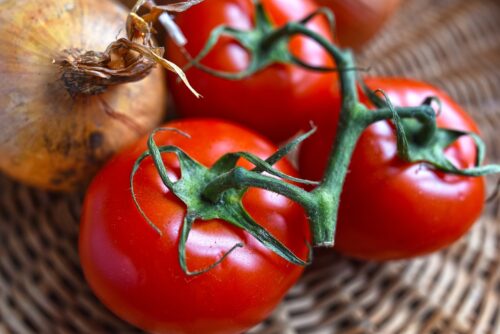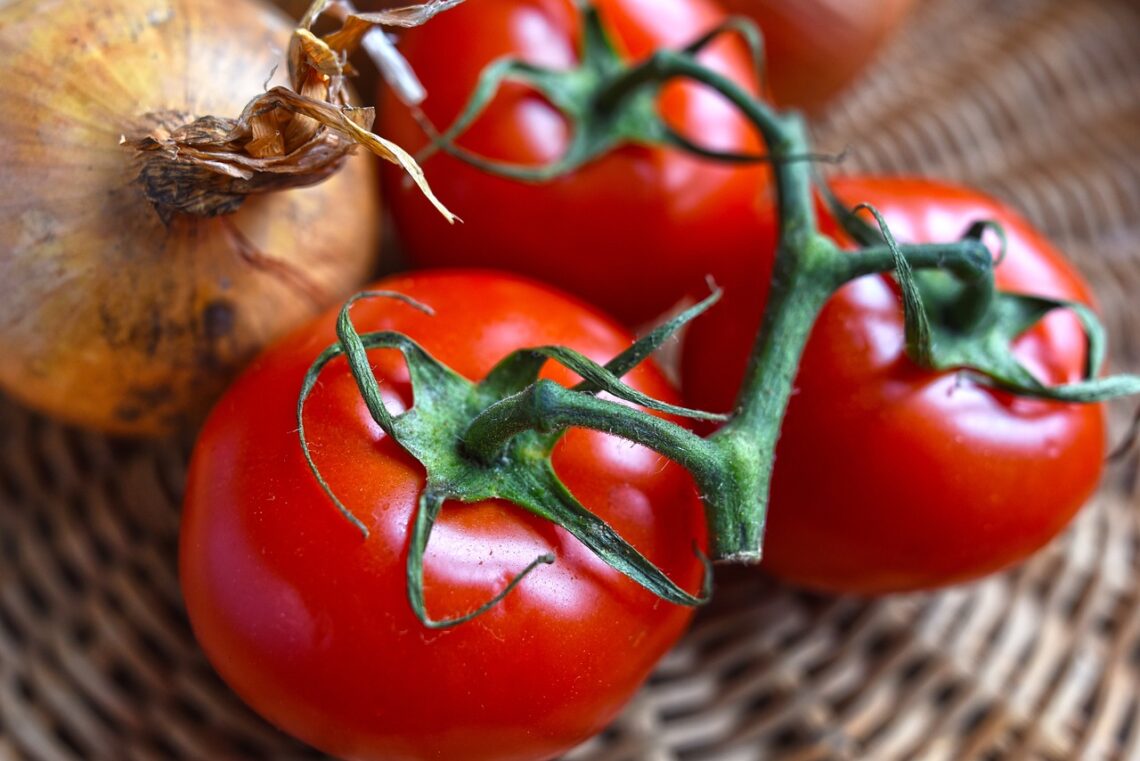Uncover the Tomato Companion Plants to create a flourishing garden. Learn which plants can help protect your tomato crop.
Tomatoes are a highly favorite addition to any garden, suitable for both new and experienced gardeners. While they are relatively low-maintenance, it’s important to provide them with the right companions to ensure their optimal growth. Certain plants can enrich the soil and ward off pests, but others can compete for nutrients, block sunlight, or attract disease. Here, we guide you about the Best Tomato Companion Plants.
Read: Arugula Companion Plants
Good Tomato Companion Plants

1. Lettuce
To create an effective ground cover that can retain moisture and suppress weeds, consider planting lettuce alongside your tomato plants. This strategy can also reduce the need for frequent weeding. As an added benefit, the shade provided by the tomato plants can help protect the lettuce from bolting prematurely.
2. Chives
Chives not only add a delightful flavor to your garden, but they can also act as natural repellents against aphids, nematodes, and mites. As a result, chives can be valuable companion plants to help protect your tomato plants from these pests.
3. Asparagus
In the garden, asparagus and tomatoes make a great team. Tomatoes are effective at deterring pesky asparagus beetles, while asparagus can help ward off nematodes in the soil that can damage tomato plants. Together, these two plants form a dynamic duo that can benefit each other and promote a healthy garden.
4. Marigolds
Marigolds not only add beauty to your garden, but they also play a vital role in promoting a healthy garden ecosystem. By attracting bees and ladybugs, they help to keep aphids, slugs, tomato worms, and snails at bay, pests that can cause significant damage to tomato plants.
Furthermore, these plants contribute to the overall health of the soil, which can be beneficial for the growth of tomatoes.
5. Basil
Basil and tomatoes share a cooperative relationship both in and out of the kitchen. The lively and fragrant herb is known to ward off pests such as flies and hornworms and is also thought to enhance crop production.
6. Garlic
Garlic has the ability to repel spider mites, and a garlic-based spray can provide protection to plants and soil from blight.
7. Parsley
Parsley is a tried and tested companion for tomatoes as it promotes growth and lures in natural predators of the tomato hornworm, such as ladybugs. However, it is important to note that parsley should be kept at a safe distance from mint plants.
8. Squash and Borage
Tomatoes, borage, and squash often make a great trio in companion planting due to their synchronized timing. Borage, a flowering herb with lovely blue star-shaped blooms, is a favorite among pollinators and also works as a natural deterrent for tomato hornworms.
In addition to enhancing the growth and taste of tomatoes while protecting them, borage also makes for a visually appealing and striking garnish. As for late-summer squash, which relies on pollination to produce fruit, the groundwork has already been laid by the time it’s ready to bloom.
9. Nasturtium
Nasturtium is a great choice due to its peppery and bitter oils that make it an effective all-around pest repellent. However, it should be kept at a distance as it tends to spread quickly and dominate other plants if left unchecked.
Read: Endive Companion Plants
Bad Tomato Companion Plants

1. Corn
While corn and tomatoes are popular ingredients in many dishes, they should not be planted together in a garden. These plants are susceptible to the same pests and fungal infections, making them an easy target for moth larvae.
When grown in close proximity, corn, and tomato crops become doubly attractive to bugs, increasing the likelihood of infestation and destruction of both crops.
2. Fennel
Similar to brassicas, fennel can obstruct the growth of tomato plants. It’s generally not suggested to plant fennel alongside other garden vegetables, and it should be grown separately in a designated patch or pot.
While fennel can be a tasty addition to many recipes, its licorice-like aroma is not conducive to a thriving garden environment when planted alongside other vegetables.
3. Brassicas
Due to nutrient competition, the presence of cabbage, broccoli, cauliflower, kale, Brussels sprouts, and kohlrabi near your tomato plant can impede its growth.
These vegetables belong to the brassica family and require similar nutrients to tomatoes. As a result, both the tomato and the brassica plants may not receive enough nutrients to thrive, leading to stunted growth and reduced yields.
Additionally, the tomato plant may fail to produce buds, rendering the harvest unproductive.
4. Dill
Most herbs thrive in the company of tomatoes, but dill is an exception. When dill is young, it can be a useful companion plant for tomatoes as it can deter aphids, a common pest that can damage various plants. However, once dill reaches maturity and begins to produce seeds, it can impede the growth of tomato plants.
5. Eggplant
Eggplant, like potatoes, belongs to the nightshade family, which means that they compete with each other for nutrients and resources. Additionally, eggplant is prone to blight, a fungal disease that can also affect nearby tomatoes and make them more susceptible to the disease.
Blight can quickly spread through an area where crops have been harvested, carried by spores that are dispersed by the wind. If you notice sudden browning, yellowing, spotting, or dying leaves on your plants, it may be an indication of blight.
6. Potatoes
Tomatoes and potatoes belong to the nightshade family and require similar nutrients for their growth. As a result, they tend to compete with each other for resources, which can be harmful to both plants and make them vulnerable to the same diseases. If one plant is affected by a disease, it can easily spread through the soil and harm the other.
Moreover, it’s important to be cautious about the proximity of these plants as the act of harvesting potatoes can potentially damage the delicate roots of tomato plants.
7. Walnuts
Although it is not very common, planting tomatoes in the vicinity of a walnut tree can have a detrimental effect on your crop. This is because walnut trees secrete certain chemicals into the soil that can inhibit the growth of nearby plants, including tomatoes.



